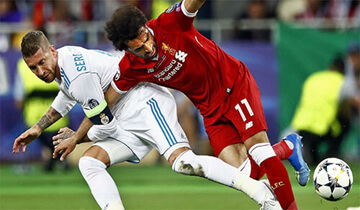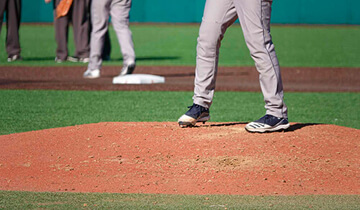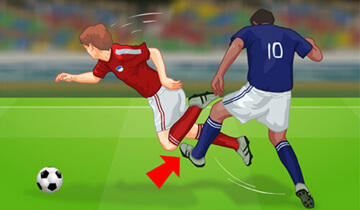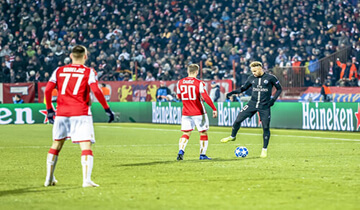Dribbling is one of the most important skills in soccer. It involves moving the ball down the field while maintaining control. Dribbling allows players to advance toward the goal, retain possession, and create scoring opportunities. Being a skilled dribbler is crucial for any soccer player.
Dribbling is defined as keeping the ball close through gentle, frequent touches with the feet. The player aims to move forward while shielding the ball from defenders. This requires coordination, agility, and awareness. Mastering dribbling takes a lot of practice and repetition.
Proper Dribbling Technique
There are a few key elements to proper dribbling technique:
Use the instep and outside of the foot
The instep and outside of the foot provide the best control when dribbling. Using the inside of the foot can result in losing possession more easily. Keeping the ball on the outside creates a barrier between the ball and defenders.
Keep the ball close
Good dribblers keep the ball within one to two feet of their body. This retains maximum control and allows for quicker changes in direction or speed. If the ball is too far away, it is easier for defenders to intercept.
Use soft, light touches
Dribbling requires gentle, frequent taps on the ball. Hard touches bounce the ball away and make it difficult to control. Soft touches keep the ball moving while maintaining close control.
Keep head up
It’s important to keep the head up while dribbling. This allows the player to see the field, defenders’ positions, and openings to pass or shoot. Dribbling with the head down results in loss of awareness.
Change speed and direction
An unpredictable dribbling rhythm challenges defenders. Varying pace by accelerating and decelerating, along with changing direction via cuts or turns, helps dribblers beat opponents. The ability to stop, start, and shift keeps defenders guessing.
Dribbling is a crucial skill that all great soccer players possess. By mastering proper dribbling technique, players can better control the ball, move down the field, retain possession, get into scoring range, and create opportunities. While it takes practice to excel at dribbling, the rewards are immense for both individual players and the whole team. Polishing this fundamental skill leads to better performance and more success on the soccer field.
When thinking about the sport, one might wonder, “how many people on a soccer team?” In standard play, each team consists of 11 players including the goalkeeper.
Develop Basic Dribbling Technique
Use your arms for balance and to keep defenders away. Stay in an athletic stance, knees bent, back straight.
Dribbling is one of the most fundamental skills in soccer. To dribble effectively, you need to maintain proper body position and technique. Your arms play an important role in balancing your body and shielding the ball from defenders.
Keep your arms out to the side, elbows slightly bent. This wider stance with your arms provides better balance and stability as you dribble the ball. Don’t let your arms cross in front of your body or drift back behind you. Keeping your arms properly positioned prevents you from being knocked off balance by defenders.
Stay in an athletic stance with your knees bent and back straight. Don’t be flat-footed or hunched over. Maintain this athletic ready position to react quickly to changes on the field. Your bent knees help absorb contact from defenders so you can retain possession.
Use the front/laces of your feet to push the ball forward with each step. Keep the ball close, within a few feet.
The ideal surface for controlling the ball while dribbling is the laces or top area of your foot. As you take a step, push the ball forward with your laces rather than kicking through the ball. This keeps the ball close so you can knock it forward to your next step.
Keep the ball within a distance of 1-3 feet when dribbling. Don’t let it get too far ahead of you where it is difficult to catch up to. Pushing the ball slightly ahead with the laces gives you better control and touch.
Taking smaller, quicker steps helps you knock the ball forward with accuracy. Don’t overkick the ball and chase after it. Keeping it close allows you to change direction and accelerate rapidly.
Keep the ball at the edge of your peripheral vision so you can see the field. Don’t look down.
As you dribble, resist the urge to stare at the ball by your feet. Keep your head up so you can see the defenders and open teammates around you. The ball should be at the edge of your peripheral vision as you scan the field.
If you look down at the ball, you lose perspective of the field. Opponents can step in front of you and steal the ball without you noticing. Keep your head up to recognize passing lanes and dribbling openings on the field.
Maintain awareness of your surroundings. Use your peripheral vision to track the ball’s movement and position. Developing this balancing act between field vision and ball control takes practice but is vital for effective dribbling.
Change pace and directions frequently to throw off defenders. Use your body to shield the ball.
Dribbling in a straight line makes it easy for defenders to catch up and challenge you. Vary your movements to keep defenders guessing. Occasionally slow down, then accelerate rapidly, or cut left and right.
Use quick changes in direction to beat defenders one on one. For example, step forward like you’re going right, then cut the ball back left using the outside of your foot. This sudden change throws the defender off balance.
Shield the ball when defenders are near. Turn your body sideways between the ball and defender. Keep your arms out for balance and prevent them from poking the ball away.
Mastering pace changes, cuts, and shields takes practice. But combining these techniques makes your dribbling unpredictable and effective. Defenders struggle to dispossess you.
Improve Dribbling Skills Through Drills
Dribbling is one of the most important fundamental skills in soccer. Mastering dribbling technique provides players with better ball control, allows them to retain possession, beat defenders, and create scoring opportunities. There are several effective dribbling drills that players can practice regularly to improve their skills.
Practice Speed Dribbling
Speed dribbling involves gently tapping and pushing the ball forward with the inside and outside of the feet while running at a moderate pace. This helps players learn to keep the ball close to their feet while moving quickly. After dribbling at a steady speed for 10-20 yards, players can introduce short bursts of sprinting for 5-10 yards. This adds variation and prepares players for changing speeds in a game. Coaches should emphasize keeping a low center of gravity during speed dribbling by having players bend their knees and keep their weight centered over the ball.
Cone Dribbling Drills
Setting up a series of cones in zig-zag patterns or different shapes allows players to practice dribbling while changing direction and weaving through obstacles. Some effective cone drills include:
- Inside-outside cones - dribble through cones using inside of one foot then outside of the other
- Slalom cones - dribble in and out of closely spaced cones in a straight line
- Square cones - dribble in a box pattern around four cones
- Diagonal cones - dribble diagonally across to each cone around a square
Varying the spacing and angles of the cones adds complexity as players progress. Defenders can also be added to apply pressure. Keeping the ball close, head up, and using quick changes of direction are key to maneuvering through cones successfully.
Crossover Dribbling
In crossover dribbling, players pass the ball from the inside of one foot to the inside of the other foot in rhythmic sideways motions. This allows them to change direction while maintaining control. Start with easy sideways passes with little momentum, then increase speed and introduce sharper cuts. Performing the drill while moving introduces an added challenge. Emphasize pushing the ball decisively to the opposite foot on each touch.
Inside-Outside Dribbling
An inside-outside drill focuses on incorporating both the instep and outside of the feet. Dribble through a straight line of cones using the inside of one foot to cut towards each cone, then the outside of the other foot to cut away. Alternate feet between cutting in and out around each cone. This teaches players to use the full range of foot surfaces for optimal control. Challenge them further by angling the approach slightly on each touch or adding defenders.
Back and Forth Dribbling
A simple drill for mastering basic touches is to pass the ball repeatedly from one foot to the other while stationary or moving across a space. Start with softer touches to gain comfortability, then increase speed and introduce directional changes. The keys are keeping feet about hip-width apart, knees bent, and head up while rolling the ball from foot to foot. This drill imitates real in-game dribbling motions.
Regularly practicing these types of focused dribbling drills builds muscle memory, coordination, and confidence on the ball. Mastering fundamental dribbling technique in training translates directly into improved skills during games. Combine drills with small-sided games in practice for the best results. With consistent, high-quality training, players can become dangerous dribblers and take their game to the next level.
Tips
Use both feet equally in drills. One-footed players are easier to defend.
When dribbling a soccer ball, it’s important to use both feet equally during drills and practice. Players who only use one foot, typically their dominant foot, are much easier for defenders to contain. By becoming proficient with both feet, you become a less predictable and more dangerous attacker.
During dribbling drills, consciously alternate between your left and right foot. Even if your weaker foot feels uncomfortable at first, stick with it and keep practicing. The more you use your weaker foot, the more touch and control you’ll develop. Drills like inside and outside cuts, dragging the ball back and forth, and dribbling around cones are great ways to improve ambidextrous ball control. Over time, using both feet will become second nature.
Striving for equal dribbling skills with both feet makes you a well-rounded player. You’ll be able to change direction quickly to evade defenders since you can instantly cut or turn either way. Defenders won’t know which way you’ll turn next. Becoming proficient with both your left and right foot is crucial for unlocking your full potential as a dangerous dribbler.
Watch professionals dribble and make feints and fakes. Emulate their moves.
Studying how professional soccer players dribble and make clever feints and fakes is a great way to improve your own dribbling skills. Pay close attention to their body movements, footwork, and ball control. Then try to emulate their techniques and moves. Mimicking the dribbling skills of pros accelerates your learning curve.
Observe how they subtly change pace or shift their body weight before changing direction. Take note of how they fool defenders by looking one way but turning the other. Focus on how close they keep the ball, their deft touches, and the angles of their cutting turns. Studying the nuances of world-class dribbling helps ingrain optimal techniques.
Try to adopt moves that suit your strengths and body type. If a short Messi turn works for you, practice integrating it into your dribbling. View clips in slow motion to analyze details. Pause and rewind to work on mimicking specific feints and cuts. Isolating and repeating technical moves trains your muscle memory. With regular observation and practice, you can learn to dribble like the pros.
Master control first, then speed. Speed comes with repetition.
When working to improve your dribbling skills, focus first on mastering ball control and technique. Speed and quickness will develop over time as you repeat drills. Rushing and dribbling too fast before you have solid control can lead to turnovers and frustration.
Practice dribbling moves at slower speeds to get the specific techniques down. Work on keeping the ball tight with small, precise touches. As your footwork and manipulations become more instinctual, then increase your pace and velocity. Maintaining close control while moving faster improves through quality repetition. Don’t expect to dribble at full speed until the moves feel natural.
Patiently master the intricacies of cuts, feints, pivots, and changes of direction. Work on relaxed ball manipulation with both feet. Gaining a feel for the ball engrains muscle memory over time. With regular, focused practice, dribbling at faster game speeds will come. But resist rushing before you have technical proficiency. Master control first, speed second.
Practice for an hour or more daily. Repetition over time leads to mastery.
Expert dribbling requires committed practice time. Strive to dribble for at least an hour or more every day. This focused repetition instills muscle memory and vectu substantially improves control and technique. The keys are regular practice and high quality.
Utilize drills like inside/outside cuts, drag backs, feints, and slaloms to ingrain footwork. Work on dribbling with different surfaces of both feet - inside, outside, laces, sole. Vary speed and direction continuously. Weave through a series of cones working on tight turns. Dribble around stationary obstacles. Practice against a wall rebounding the ball rhythmically.
Daily practice sessions focused intently on dribbling skills elevate your capabilities over time. An hour of engaging in diverse drills with efforts to implement new moves accelerates development. Dribbling mastery requires dedication through continual repetition. With regular, concentrated practice, your comfort and creativity with the ball will grow rapidly.
Conclusion
Dribbling is one of the most vital skills in soccer that all players must dedicate time to mastering. By learning proper technique, practicing essential drills consistently, and modeling moves of professional players, any motivated player can become an elite dribbler. The keys are using both feet interchangeably, keeping the ball tight through soft touches, maintaining awareness with the head up, changing pace and direction frequently, and shielding the ball properly from defenders. Players should focus first on control and technique before attempting high speeds. With daily practice of diverse drills for an hour or more, dribbling mastery develops through continual repetition over time. Soccer greats hone their incredible dribbling to artistry through years of commitment. While challenging, developing excellent dribbling ability ultimately allows creative attackers to unlock defenses, retain possession, and catalyze offensive opportunities. The reward of perfecting this fundamental skill is immense for elevating individual and team play to higher levels.







































